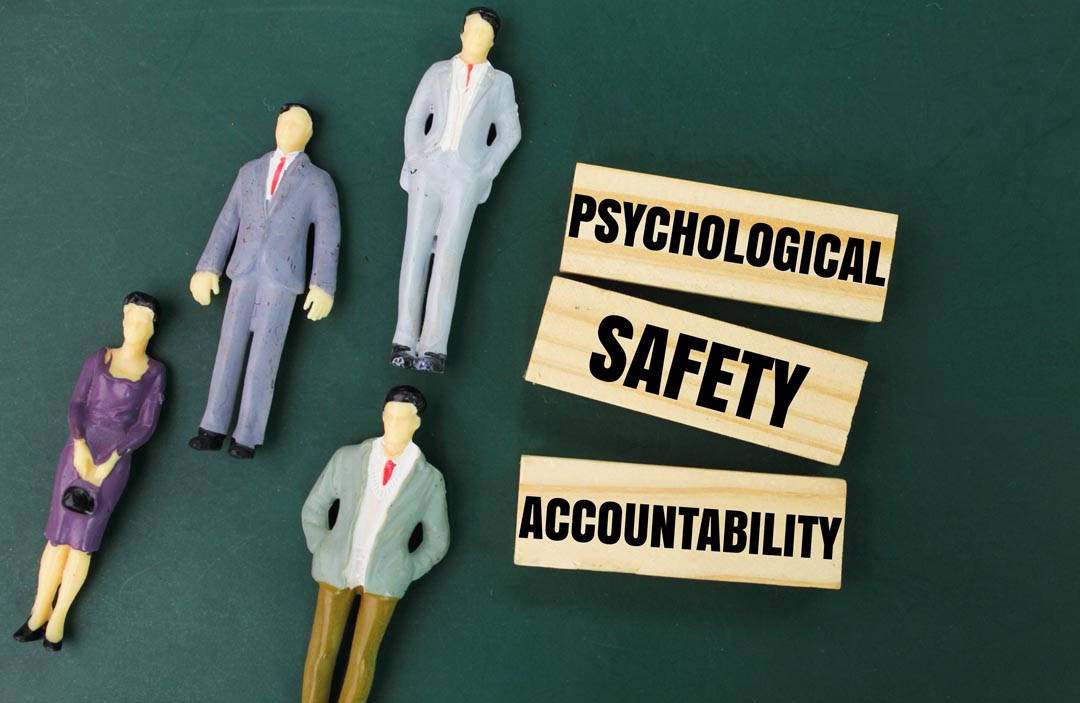James Scouller focuses his expertise on teams and shares about how to make sure yours communicated and works smoothly
Fifteen years ago, very few coaching clients knew the term “psychological safety.” Today they all do. But knowing about a concept doesn’t mean you can create and sustain it in your team.
When team members feel psychologically safe, their creativity and productivity soars
In this article I’ll share three keys to doing just that by looking at team leaders’ psychology, then their behaviour and lastly what their teammates can practise to make psychological safety normal.
What is psychological safety?
It’s a team climate where you feel you can speak freely without risk. You believe that if you make yourself vulnerable by admitting mistakes or asking seemingly naïve questions, no one will take advantage of you. It makes candour not only okay, but normal and desirable. You can open up and say what you’re really thinking and feeling. You trust your teammates. You’re safe.
So psychological safety is inextricably linked with trust and openness.
Google’s Project Aristotle research confirmed that when team members feel psychologically safe, their creativity and productivity soars, leading to better results.
Barriers to psychological safety
If it creates such good results it’s a missed opportunity that this isn’t more normal. Why, for example, wouldn’t someone say if they spotted a flaw in the team’s reasoning – a flaw that, if ignored, could lead to disaster?
Why wouldn’t someone ask, “What’s our main objective here?” amid a team conversation that’s going around in circles?
And why wouldn’t someone admit they haven’t fully understood why plan A is better than plan B, especially when big sums of money are at stake and the wrong choice will be costly?
The answer lies in individual team members’ deepest limiting beliefs. In my experience, team members and leaders hold at least one of these beliefs:
- “I’m insignificant; no one’s interested in my opinion here”
- “I’m not good enough; I’ll only fail or make mistakes”
- “I’m unlikeable; no one will trust me or feel close to me”
They may not be the exact words everyone uses, but after twenty years of coaching leaders and their teams, I can tell you these beliefs, the fears they breed, and the defensive behaviours they drive, are almost universal.
They expose team members to the fears of feeling ignored, humiliated, dismissed, mocked, criticised rejected or ostracised if they say what’s on their minds. So, if your colleagues have these experiences in your team, it’ll only confirm what they already believed about themselves. And that will hurt. It’s why many people find it hard to speak up in their team even though, logically, it would help the team to do so. It’s too risky, they believe. Better to say nothing, they think.
There are three things you can do to create safety in the face of these psychological risks and help people say what’s on their minds:
1) Team leaders can work on their psychology
2) Team leaders can observe certain behavioural dos and don’ts
3) All team members can practise openness until it becomes natural
Team leaders’ psychology
I’ve found that a team leader’s behaviour has more effect on psychological safety and therefore openness than any other factor. But they can’t tell their teammates to be open. Nor can they persuade them to say what they’re thinking. They have to lead by example – they must model the way for their teammates.
That starts with working on their own inner psychological safety, perhaps with a psychologically trained executive coach. If team leaders don’t feel psychologically safe inside – if one or more of the three big limiting beliefs and the fears, they induce have them in their grip – no amount of advice on what they should or shouldn’t do during meetings will help.
They may grasp the idea of “psychological safety” intellectually and talk about it eloquently, but under pressure they won’t project it because inside they feel psychological danger. Their beliefs and associated fears will drive them to engage in defensive behaviours, which will probably increase feelings of psychological risk among their teammates. For example, if they criticise and blame their colleagues, driving them into their shells. So by letting go of these limiting beliefs and freeing up their behaviour they’ll start to set the right example.
Team leaders’ behaviour
While leaders work on their inner beliefs, they can practise eight behaviours to encourage their teammates to say what they’re really thinking and feeling. Leaders can:
- Avoid behind-closed-doors decision-making. Decision making needs to be out in the open, with everyone included. Exclude people and they’ll assume you don’t want their opinion, meaning they’re likely to shut down.
- Show interest, make eye contact and be present when they’re listening. For example, by not letting their mobile or laptop distract them.
- Show their vulnerable or playful sides by admitting when they don’t know the answer, or they’ve made a mistake, or by offering crazy ideas in creative sessions.
- Not assume they’ve always understood what others mean before they comment. They can try playing back what the other has said to confirm they’ve grasped their point before making their own.
- Avoid questions starting with “why” (unless they’ve already established a strong rapport) so the other person doesn’t receive them as attacks or attempts to blame. “Why” questions often put people on the defensive, meaning you don’t get to the core answers you need. Turn them into questions starting with “What…?”
- Pay attention to their body language, especially their facial expressions, to make sure they’re not grimacing, scowling or frowning, thus making people wary of speaking up.
- Invite people to challenge their perspective and push back on their assumptions, opinions or inferences.
- Scan the room, notice who is and isn’t talking, and invite silent or low-profile members to say what they’re thinking or feeling.
Teammates’ behaviour
Psychological safety in teams and how it shows through people saying what they’re really thinking and feeling isn’t all down to their leaders. Everyone can contribute to a culture of openness. So it helps if all team members engage in conscious practice in saying what’s on their minds in ways that help the team.
You can find useful openness exercises on the internet. Many focus on members revealing their personal histories, especially the defining moments in their lives. However, I’ve found it’s insufficient for people to share their stories. Yes, it helps, but it’s not enough.
That’s why I recommend that your openness-building exercises include questions touching on team members’ sense of belonging or added-value in the team and their relationships with teammates. For example, after some conversation warm-ups, try asking each member to say:
- What added value they bring to the team right now and how satisfied or dissatisfied they are with that – and what extra added value they could bring if given the chance
- Which of their teammates they think they know and understand well, which they don’t, and what questions they’d like to ask of the second group to know them better
Leaders cannot simply issue an edict that there will be psychological safety in the team. They and their teammates must put in effort to creating a psychologically safe climate, but leaders must first model the way. Do that and not only will your results improve, you’ll enjoy the team working experience.
James Scouller is an executive coach and author of the trilogy, How To Build Winning Teams Again And Again




